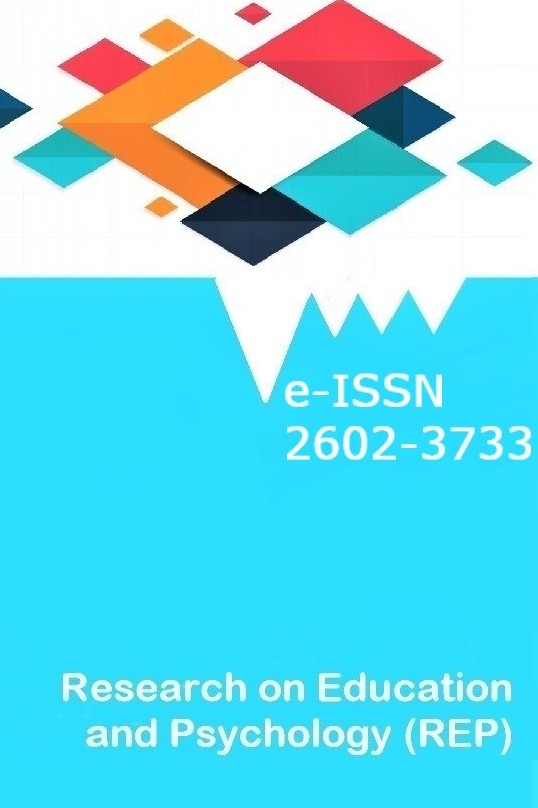Suzan WASİK, Jennifer BARROW, Chadwick ROYAL, Racheal BROOKS, Levette DAMES, Livia CORRY, Corbin BİRD
Online Counselor Education: Creative Approaches and Best Practices in Online Learning Environments
Online Counselor Education: Creative Approaches and Best Practices in Online Learning Environments
The explosive and steady growth in online learning has created seismic shifts education and in faculty’s teaching methods and modalities. As a result of the continual market demand for online educational options, counseling faculty are increasingly expected to create, teach, and manage online courses. In some educational settings, this is done with little or no professional development or institutional and financial support for the teacing faculty members. Designing courses to prepare counselors requires instructors to address various learning styles in the digital environment through the offerings of their learning management system. Assessing students informally and formally can increase understanding, engage digital learners, and prepare counselors for the use of technology in their professional practice. Further, course development requires instructors to discover innovative ways to create a platform for social presence outside of discussion boards. This article offers creative approaches that counselor educators can adopt when designing courses, creating a classroom community, and engaging with students in an online educational environment.
Keywords:
Online education, Best practices, Counselor education, Education,
___
- Allen, I. E., & Seaman, J. (2016). Online report card: Tracking online education in the United States. Babson Survey Research Group. Retreived from https://files.eric.ed.gov/fulltext/ED572777.pdf
- Allen, E., & Seaman, J. (2017). Distance education enrollment report 2017. Digital Learning Compass. Retreived from https://files.eric.ed.gov/fulltext/ED580868.pdf
- Baran, E., & Correia, A. (2014). A professional development framework for online teaching. TechTrends, 58(5), 96-102. doi: 10.1007/s11528-014-0791-0
- Council for Accreditation of Counseling and Related Educational Programs (CACREP). (2018). Program Directory. Retrieved from http://www.cacrep.org/directory/
- D'Agustino, S. (2012). Toward a course conversion model for distance learning: A review of best practices. Journal of International Education in Business, 5(2), 145-162. doi: 10.1108/18363261211281753
- Dixson, M. D. (2012). Creating effective student engagement in online courses: What do students find engaging?. Journal of the Scholarship of Teaching and Learning, 10(2), 1-13.
- Driscoll, A., Jicha, K., Hunt, A. N., Tichavsky, L., & Thompson, G. (2012). Can online courses deliver in-class results? A comparison of student performance and satisfaction in an online versus a face-to-face introductory sociology course. Teaching Sociology, 40(4), 312–331. doi: 10.1177/0092055X12446624
- Dudding, C. C., & Drulia, T. C. (2013). Best practices in an online master's degree program in communication sciences and disorders. Contemporary Issues in Communication Science and Disorders, 40, 59-67.
- Gilakjani, A. P. (2011). Visual, auditory, kinesthetic learning styles and their impacts on English language teaching. Journal of Studies in Education, 2(1), 104-113.
- Green, T., Hoffmann, M., Donovan, L., & Phuntsog, N. (2017). Cultural communication characteristics and student connectedness in an online environment: Perceptions and preferences of online graduate students. Journal of Distance Education, 32(2), 1-29.
- Holmes, C. M., & Reid, C. (2017). A comparison study of on-campus and online learning outcomes for a research methods course. Journal of Counselor Preparation and Supervision, 9(2). doi: 10.7729/92.1182
- Holmes, C. M., & Kozlowski, K. A. (2014). “Tech support”: Implementing professional development to assist higher education faculty to teach with technology. Journal of Continuing Education and Professional Development, 2(1), 9-20. doi:10.7726/jcepd.2015.1002
- Keengwe, J., & Kidd, T. (2010). Towards best practices in online learning and teaching in higher education. Journal of Online Learning and Teaching, 6(2), 533-541. Retrieved from http://jolt.merlot.org/vol6no2/keengwe_0610.htm
- Kauffman, H. (2015). A review of predictive factors of student success in and satisfaction with online learning. Research in Learning Technology, 23, 1-13. doi: 10.3402/rlt.v23.26507
- Kranzow, J. (2013). Faculty leadership in online education: Structuring courses to impact student satisfaction and persistence. Journal of Online Learning and Teaching, 9(1), 131.
- Northrup, P. T. (2009). Online learners’ preferences for interaction. The perfect online course: Best practices for designing and teaching, (pp. 463-473). Charlotte, NC: Information Age Publishing.
- Plante, K., & Asselin, M. E. (2014). Best practices for creating social presence and caring behaviors online. Nursing Education Perspectives, 35(4), 219-223.
- Puzziferro, M., & Shelton, K. (2008). A model for developing high-quality online courses: Integrating a systems approach with learning theory. Journal of Asynchronous Learning Networks, 12, 119-136.
- Rehfuss, M. C., Kirk-Jenkins, A., & Milliken, T. (2015). Students' experiences with different course delivery modalities: on campus, online, and satellite. Journal of Human Services, 35(1), 28-38.
- Rogers, P. C., Graham, C. R., & Mayes, C. T. (2007). Cultural competence and instructional design: Exploration research into the delivery of online instruction cross-culturally. Educational Technology Research and Development, 55(2), 197-217.
- Stack, S. (2015). Learning Outcomes in an online vs traditional course. International Journal for the Scholarship of Teaching and Learning, 9(1), 1-18.
- Surjono, H. D. (2011). The design of adaptive e-learning system based on student’s learning styles. International Journal of Computer Science and Information Technologies, 5(2), 2350-2353.
- Vasileva-Stojanovska, T., Malinovski, T., Vasileva, M., Jovevski, D., & Trajkovik, V. (2015). Impact of satisfaction, personality and learning style on educational outcomes in a blended learning environment. Learning and Individual Differences, 38, 127-135.
- Woodley, X., Hernandez, C., Parra, J., & Negash, B. (2017). Celebrating difference: Best practices in culturally responsive teaching online. TechTrends, 61(5), 470-478. doi:10.1007/s11528-017-0207-z
- Yayın Aralığı: Yılda 4 Sayı
- Başlangıç: 2017
- Yayıncı: Bülent DİLMAÇ
Sayıdaki Diğer Makaleler
Examining the 360° Case Conceptualization Process: A Comparison of Two Groups
Laura GALLO, Meredith RAUSCH, Jennifer REİD
Anatolian Practice with Islamic Political Theory -from Ilm Tadbir al-Manzil to Baciyan-i Rum-
Investigating Psychological Well-Being Levels of Teenagers Interested in Esport Career
Online Counselor Education: Creative Approaches and Best Practices in Online Learning Environments
Suzan WASİK, Jennifer BARROW, Chadwick ROYAL, Racheal BROOKS, Levette DAMES, Livia CORRY, Corbin BİRD
Why Do We Have Emotions? The Social Functions of Emotions
The Best Time to Offer a Course in Research Methods
The Predictor Relations between Values, Love Attitudes and Forgiveness Levels of the Married Couples
